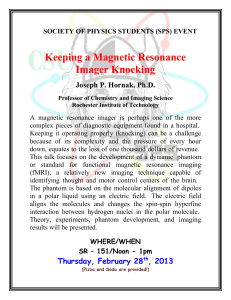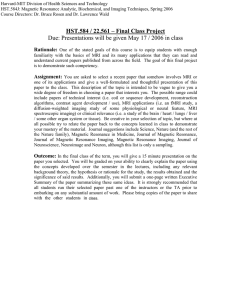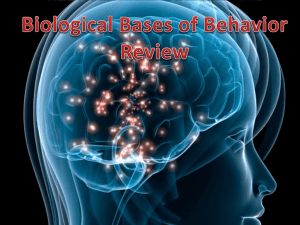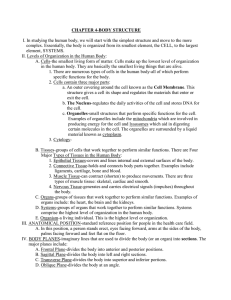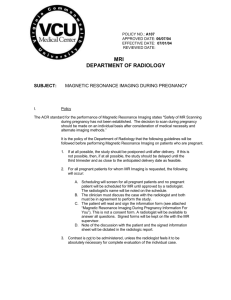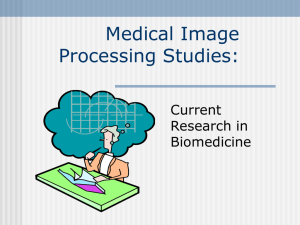ANPR_AYT_Image_Puzz_V01
advertisement
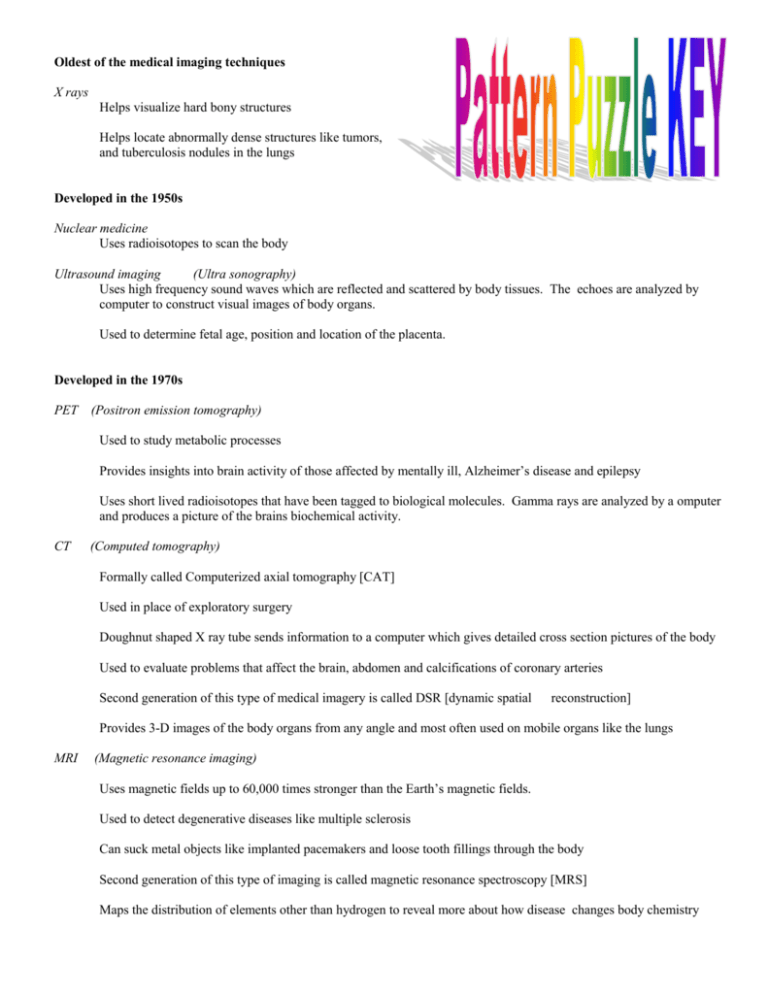
Oldest of the medical imaging techniques X rays Helps visualize hard bony structures Helps locate abnormally dense structures like tumors, and tuberculosis nodules in the lungs Developed in the 1950s Nuclear medicine Uses radioisotopes to scan the body Ultrasound imaging (Ultra sonography) Uses high frequency sound waves which are reflected and scattered by body tissues. The echoes are analyzed by computer to construct visual images of body organs. Used to determine fetal age, position and location of the placenta. Developed in the 1970s PET (Positron emission tomography) Used to study metabolic processes Provides insights into brain activity of those affected by mentally ill, Alzheimer’s disease and epilepsy Uses short lived radioisotopes that have been tagged to biological molecules. Gamma rays are analyzed by a omputer and produces a picture of the brains biochemical activity. CT (Computed tomography) Formally called Computerized axial tomography [CAT] Used in place of exploratory surgery Doughnut shaped X ray tube sends information to a computer which gives detailed cross section pictures of the body Used to evaluate problems that affect the brain, abdomen and calcifications of coronary arteries Second generation of this type of medical imagery is called DSR [dynamic spatial reconstruction] Provides 3-D images of the body organs from any angle and most often used on mobile organs like the lungs MRI (Magnetic resonance imaging) Uses magnetic fields up to 60,000 times stronger than the Earth’s magnetic fields. Used to detect degenerative diseases like multiple sclerosis Can suck metal objects like implanted pacemakers and loose tooth fillings through the body Second generation of this type of imaging is called magnetic resonance spectroscopy [MRS] Maps the distribution of elements other than hydrogen to reveal more about how disease changes body chemistry



